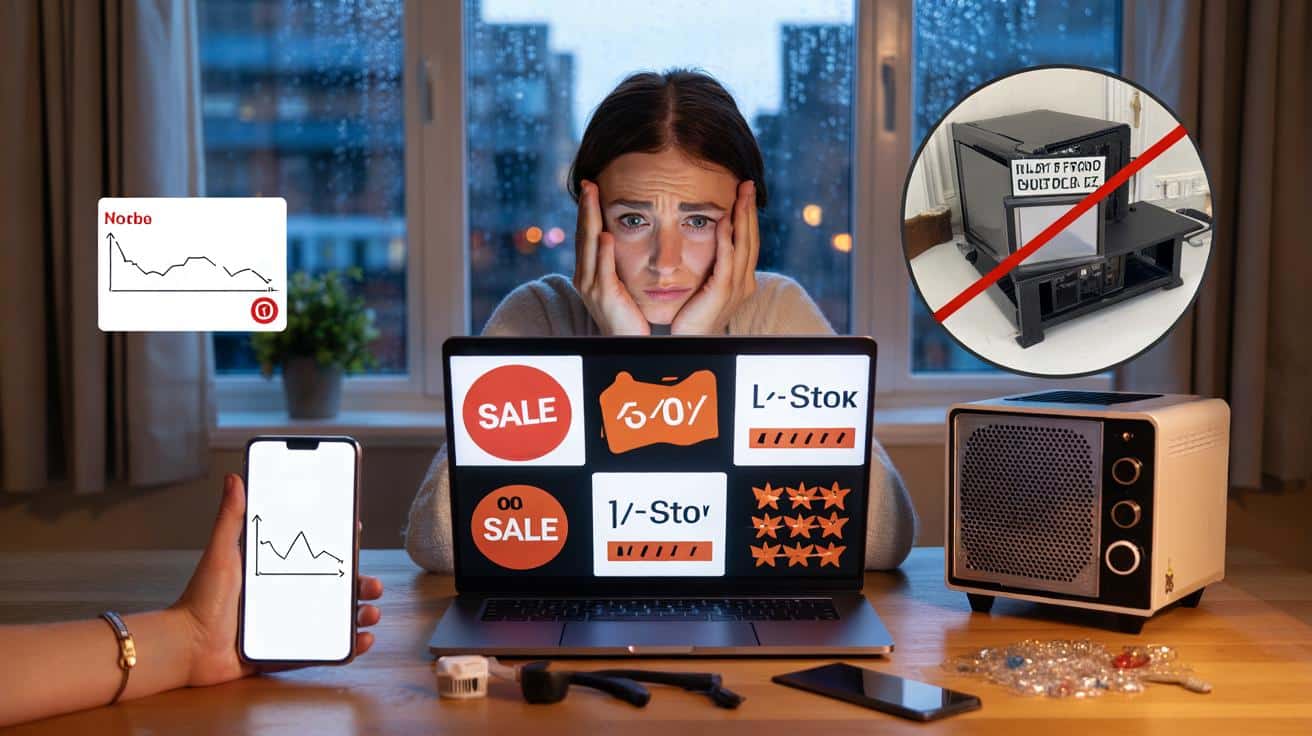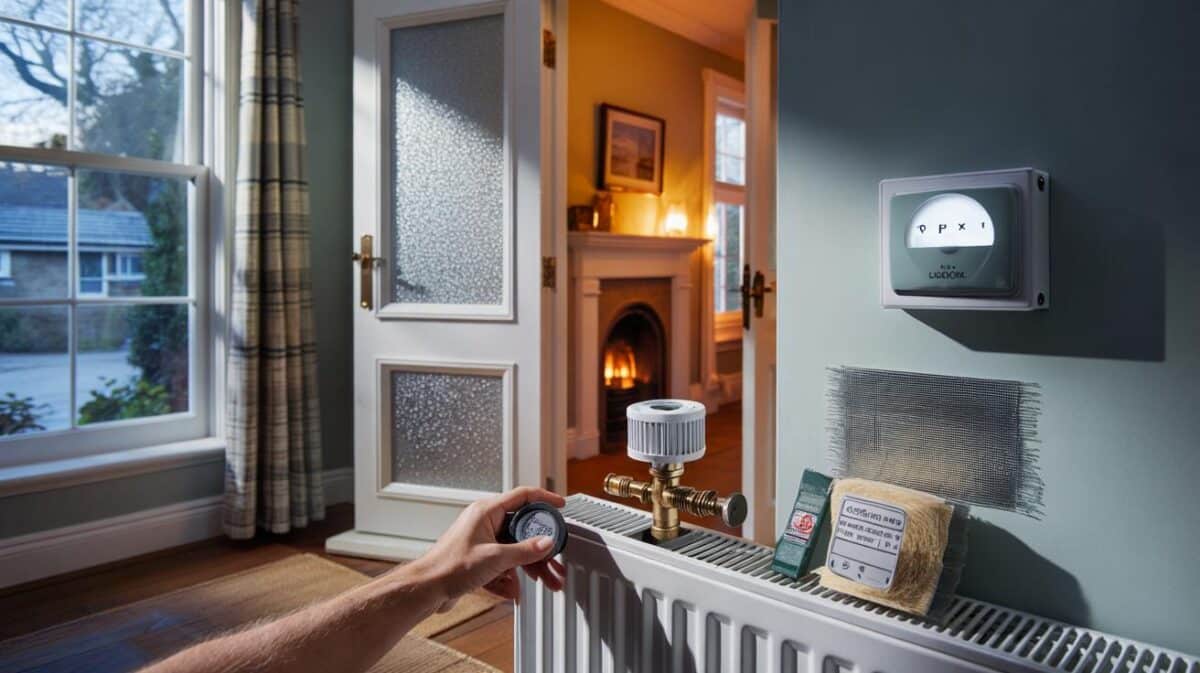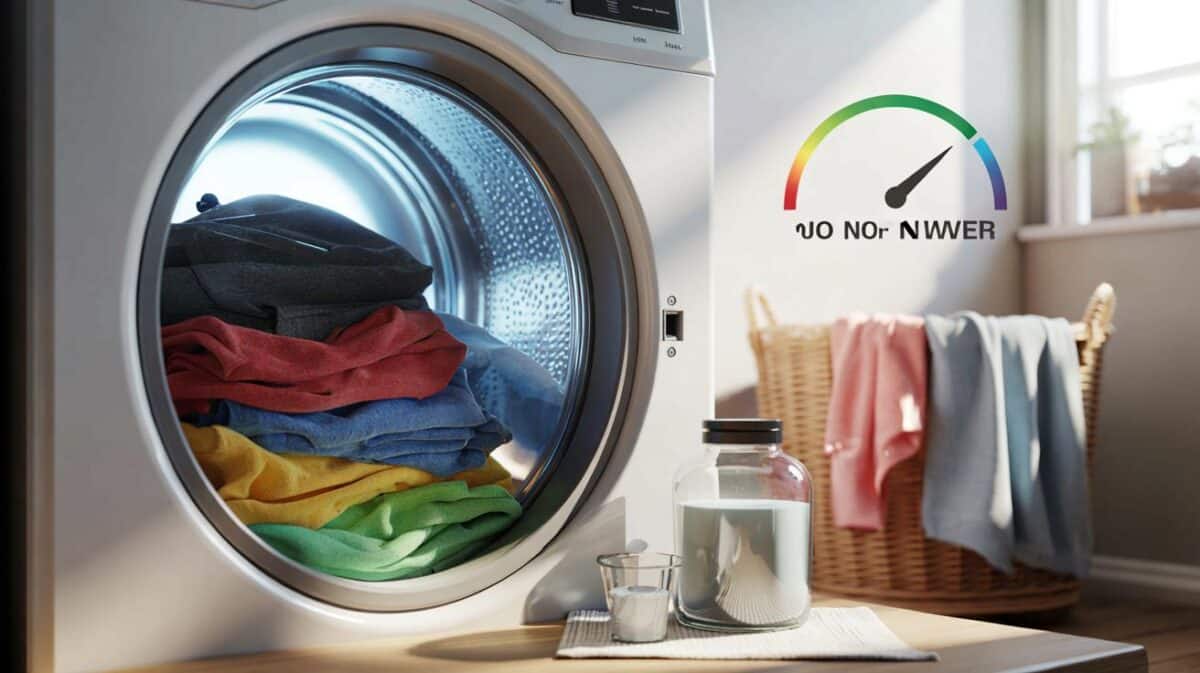Flashing timers, slashed RRPs and “only 3 left” banners push the same button: now or never. The truth? Many of the best-looking bargains are either recycled prices, stripped-down models, or deals with strings attached.
The rain had just turned to that London mist that sneaks under your collar when my phone lit up: “Ends at midnight!” The group chat went off — Dan wanted the 75-inch telly, Priya swore the air fryer was half price, someone shared a link to an “official outlet” with suspiciously perfect reviews. We juggled tabs, tapped through pages, and watched the clock. We’ve all had that moment when the pulse quickens and you feel like you’re about to beat the system. Then I punched in the TV’s model code and found the same screen, same spec, £120 cheaper three Tuesdays ago at a different retailer’s “quiet sale”. The timer blinked on. The feeling cooled. Except the bargain wasn’t real.
The seven Black Friday traps snaring Brits
Walk any UK high street or swipe through a feed this week and you’ll see the same seven lures. Inflated “was” prices designed to anchor your brain to a fake saving. Scarcity plays — countdowns, “only 2 left”, “last day”, repeated forever — that make your palms itch. And bundles that look premium on the banner but hide a mediocre core product under a pile of throwaway accessories. If you can’t find the exact model code, you’re not comparing the same deal. Retailers know most of us won’t zoom in on the code, the wattage, the panel type, the year.
Then there are stealthy twins. TVs and laptops made for promotion with slight changes in model numbers — almost the same spec, cheaper panel, fewer ports — so price trackers don’t ping. Marketplace “bargains” shipped from abroad with no UK warranty and reviews that read like they were spat out by the same robot. And the big one right now: Buy Now, Pay Later that makes a price feel small by slicing it into four, while delivery fees, return costs and restocking charges wait in the small print. Which? has repeatedly found that many headline Black Friday “deals” were the same price or cheaper earlier in the year. It’s a pattern, not an accident.
Why does this work so well on us? Anchoring and urgency bend judgement — your brain hugs the first number it sees and then rushes against a clock. Retailers add decoys to steer you to the “middle” option that looks safe, even when the base model would do. Scarcity, social proof (“1,243 bought today”), and friction — like hiding the model year or burying return fees — create a fog where price feels like value. Many promotions also collide with shrinkflation: same product line, smaller capacity, fewer features. And on marketplaces, the long tail of third-party sellers thrives on the blur, making like-for-like comparison a chore. That blur is the trap.
How to spot the fakes in 30 seconds flat
Start with the model code, not the banner. Copy it, paste it into PriceSpy, Keepa or Pricerunner, and look for a three- to six-month price history. If the “Black Friday” price has been matched or beaten before, you’ve got your answer. Check the year suffix on TVs, laptops and headphones — a QN91A isn’t a QN91B — and confirm the panel type (VA vs IPS), ports, and warranty length in the spec sheet. Run the seller through Trustpilot and Companies House, then glance at shipping and return fees. That’s two minutes that saves hundreds.
On bundles and “free gifts”, strip it back: what’s the core item worth on its own, and is the accessory junk drawer material? With BNPL, add up the total and include delivery, returns and interest if you slip. For appliances, check energy labels and estimate annual running cost; a cheap tumble dryer can be an expensive habit. Let’s be honest: nobody does that every day. But tonight, it might be the difference between a win and a regret. Silence the countdown and read the small numbers.
When a discount looks too smooth, slow the scroll. Look for the quiet tells: deleted Q&As on product pages, vague warranties, and reviews that repeat odd phrases. If you feel rushed, you’re being steered.
“A real deal stands up to daylight — same price history, clear model number, and a return policy you don’t have to squint to read,” said a London retail analyst I spoke to this week.
- Check price history (Keepa/PriceSpy) before you click buy.
- Confirm exact model code and model year.
- Compare the core product, not the bundle fluff.
- Read delivery, returns and restocking fees.
- Scan reviews for repetition, dates, and verified purchases.
- For BNPL, total everything and set a repayment reminder.
- Prefer UK warranty and named manufacturer support.
Where this leaves us — and what to do next time
Black Friday isn’t a write-off; it’s a stage where good and bad offers perform at once. The trick is deciding which scenes to watch. If a deal survives a model-code check and a price graph, you’ve probably got a keeper. If a retailer can’t name the warranty, or a marketplace seller hides behind a cluster of five-star clones, give it a wide berth. *This isn’t about killing the buzz; it’s about keeping the win yours.*
There’s also the question of what you really need. Upgrades feel thrilling in November, less so in March when the credit card bill still remembers. Use one anchor — your own budget — not theirs. The better retailers are transparent because repeat customers beat one-night stands. And that’s the quiet bonus of doing it right: you shop where you’re treated like a grown-up, not a target. The rarest deal isn’t 70% off; it’s clarity under pressure.
| Point clé | Détail | Intérêt pour le lecteur |
|---|---|---|
| Price history beats hype | Check graphs on Keepa, PriceSpy, Pricerunner | Separates true drops from recycled “deals” |
| Match the exact model | Use full model code, year suffix and spec sheet | Avoids promo-only or cut-down variants |
| Total cost, not instalments | Include delivery, returns, fees and energy use | Prevents “cheap now, costly later” traps |
FAQ :
- Are “was” prices legal in the UK?Retailers can show a previous price, but the CMA says it must reflect a genuine earlier selling price, not a made-up RRP or a one-day spike.
- How do I spot a “special” Black Friday model?Search the full code and compare ports, panel type and year against the mainstream model. If you can’t find reviews beyond the retailer, be wary.
- Should I buy extended warranties?Often no. The Consumer Rights Act covers faults for up to six years in England and Wales. Consider a manufacturer’s free guarantee first.
- Are BNPL offers a bad sign?Not always, but they can mask the total. Set reminders and check for fees if you miss a payment. If the price only looks OK in instalments, walk.
- What tools do Brits actually use on the day?PriceSpy, Keepa, Pricerunner, Idealo, Trustpilot and the manufacturer’s site for the exact model code. Two tabs can save you a week’s wages.








